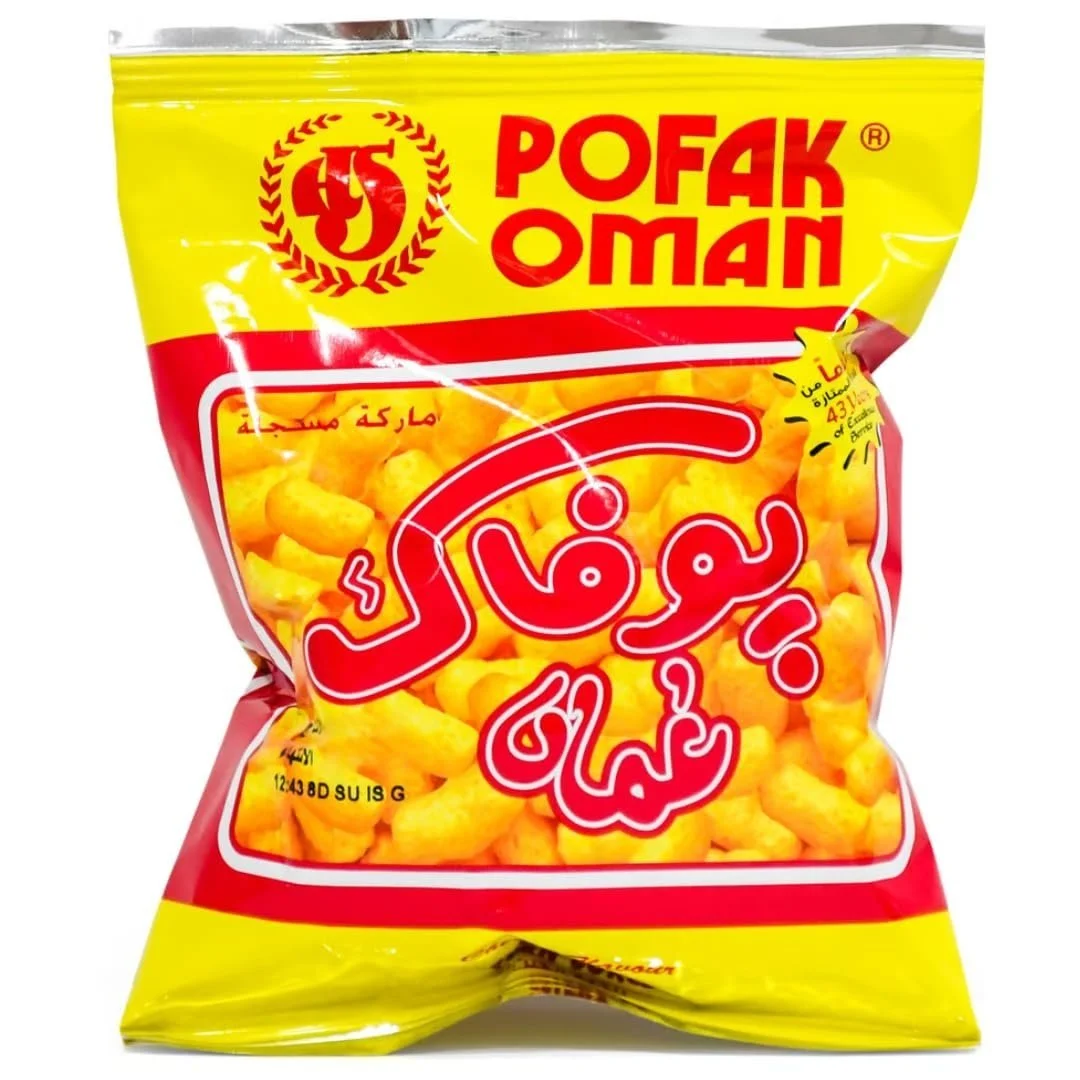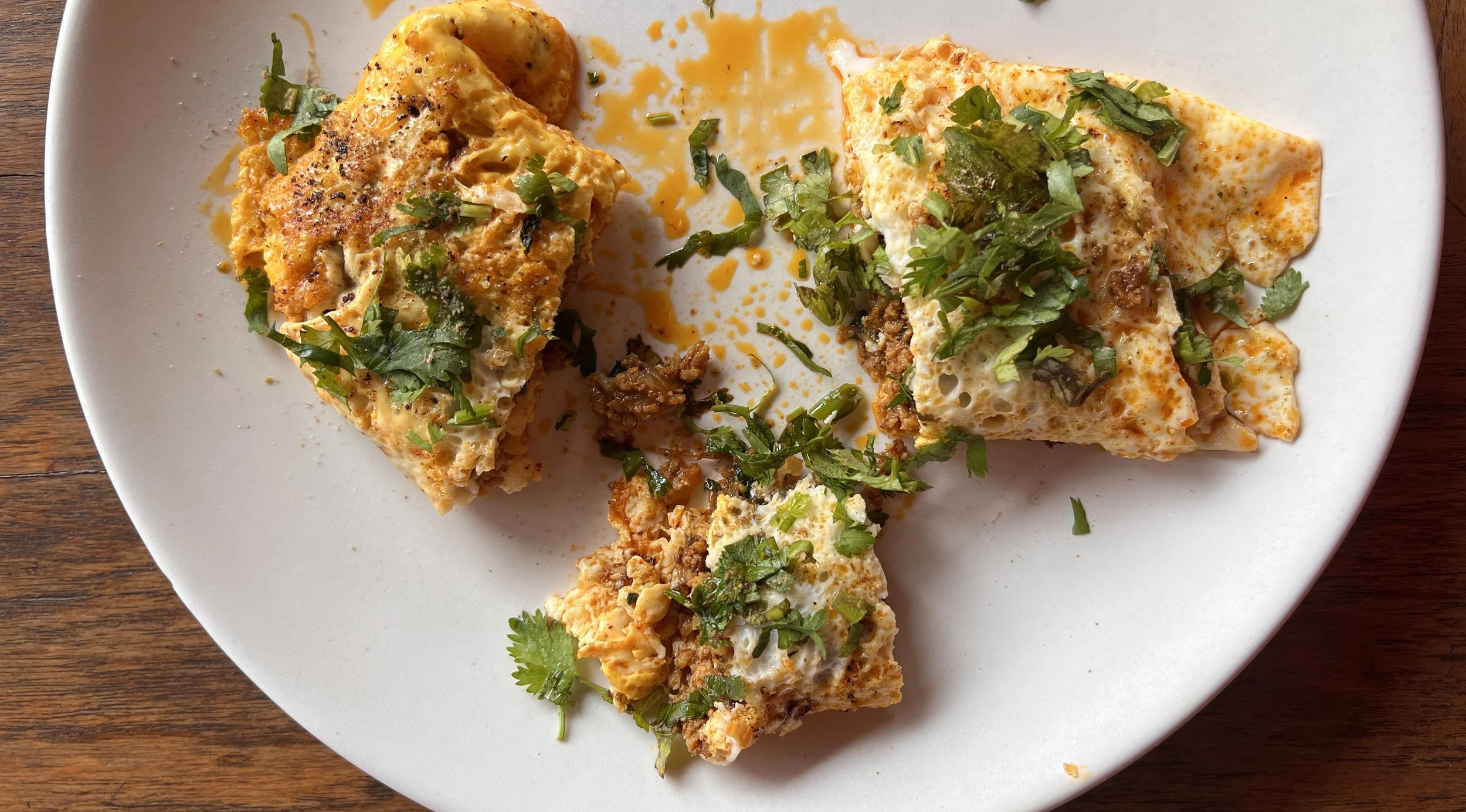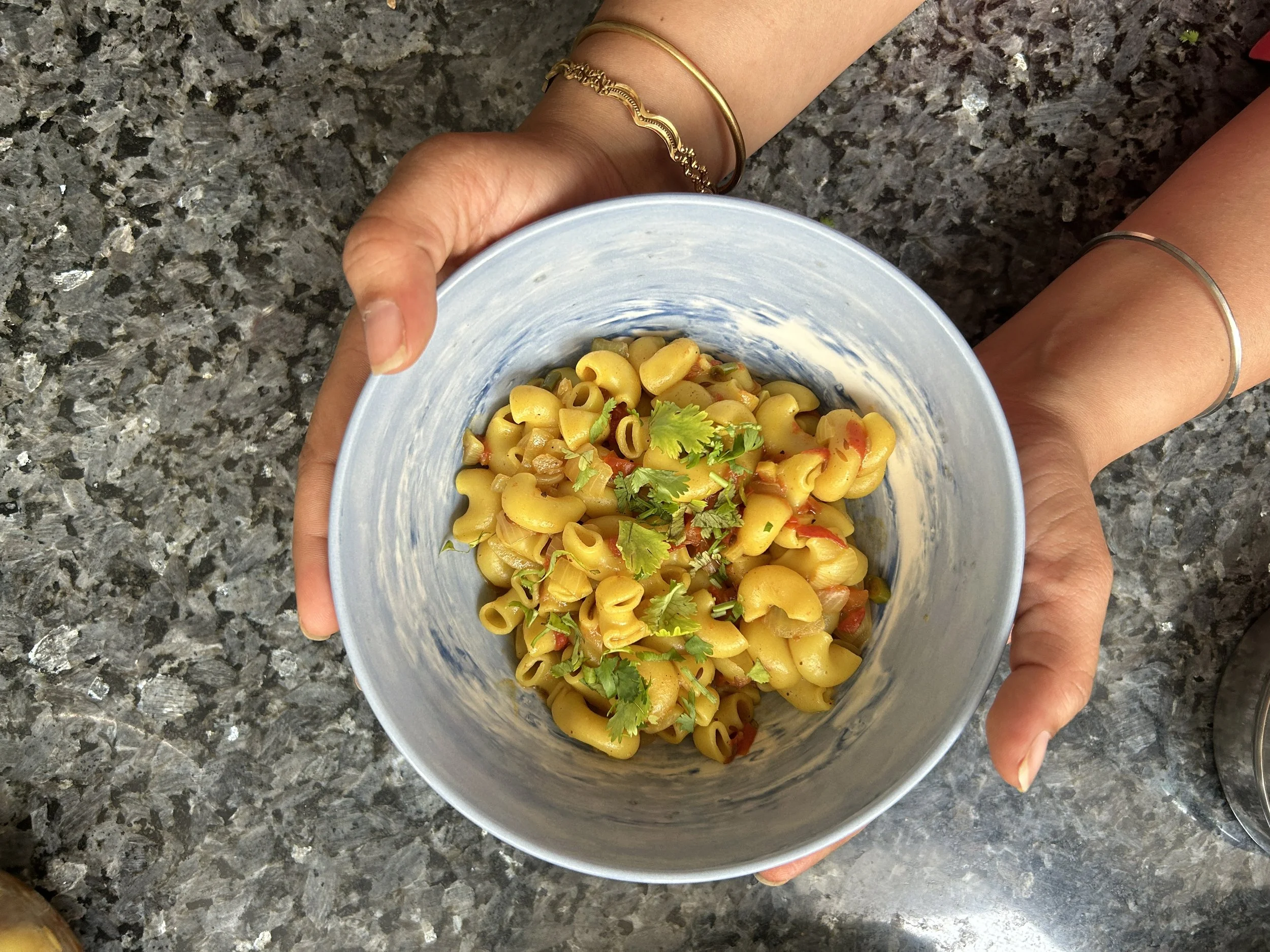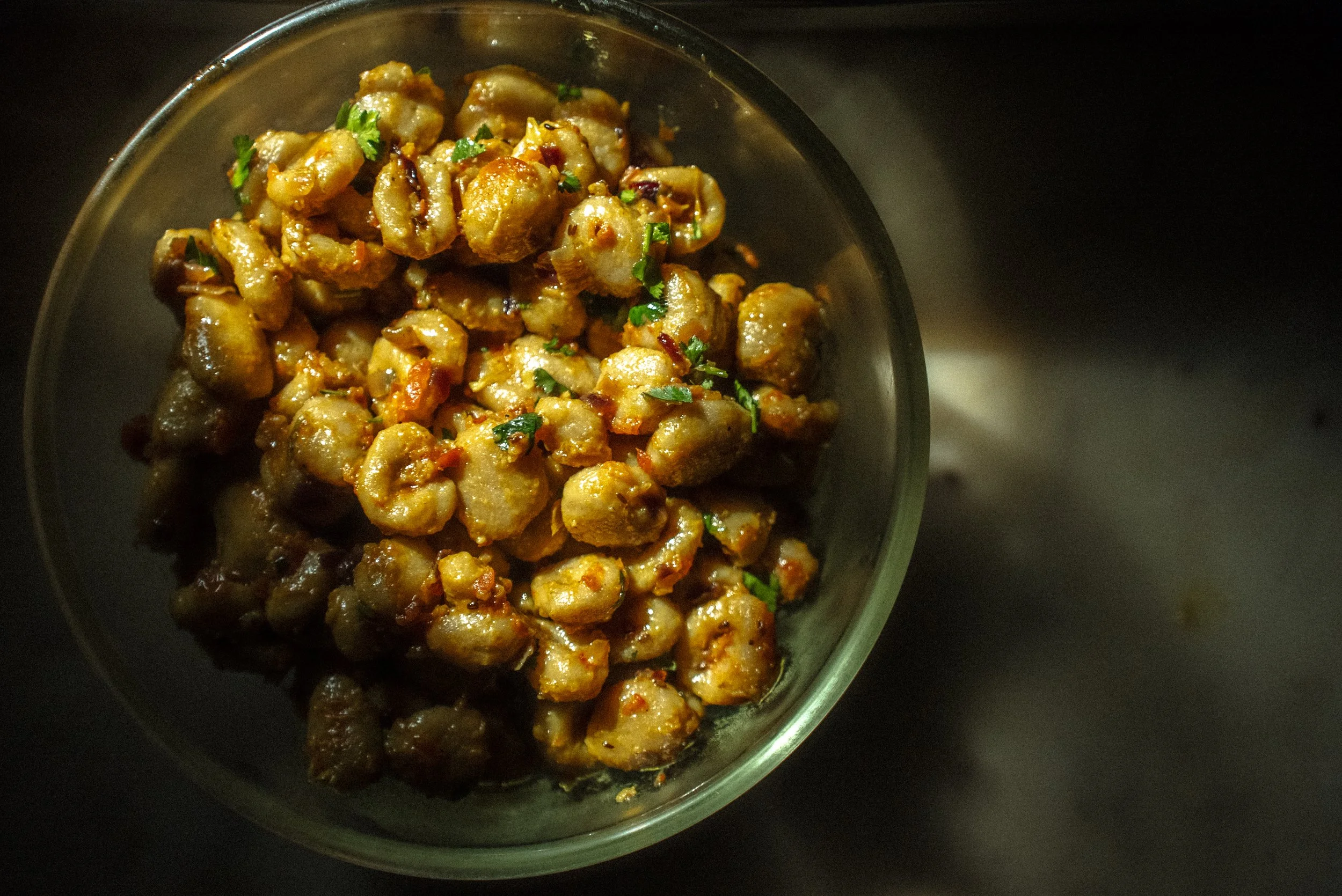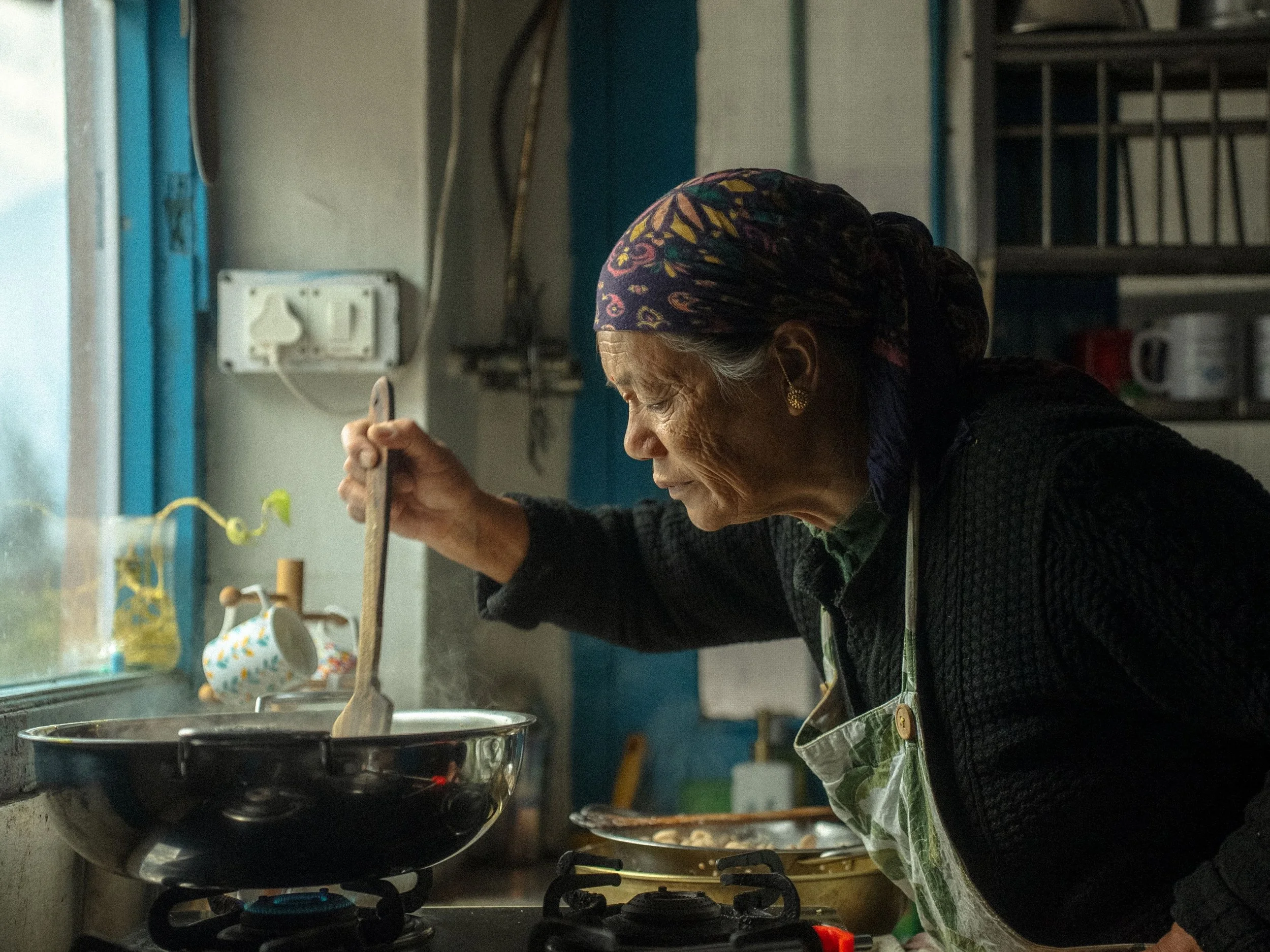Chips Oman, Halva, & Picnic Aloo: A Diaspora of Tastes and Half-Memories

For Indians living in Oman, food became a way to hold on to memories of their home country, and an unexpected chance to explore the regional diversity of cuisines in India. From puris and pulaos to picnic aloo, this was food cooked in fellow Indians’ homes, or eaten on weekend picnics at the nearest beach or wadi. Priyanka Sacheti dips into childhood memories to share stories of her mother’s aloo sabzi, and picnics in the sun.
It was a short text from my mother that led me down a nostalgia trip. She messaged to say she had prepared ‘picnic aloo’ for lunch — a special aloo sabzi made with spices and mustard seeds, which I associate with winter picnics in Oman, where I grew up. It led me to reminiscing about childhood picnics with my family, and Indian friends from the Sultan Qaboos University (SQU) campus, where my parents worked and lived in for over three decades.
The moment Oman’s searing summer temperatures gave away to mild, pleasant winters, my parents and their friends began planning weekend picnics to the nearest beach or wadi. They would meticulously chart out the potluck menu over phone calls, allocating different courses to each family: pakoras and other snacks, puris, pulao, raita; my mother usually made sabzis, like the picnic aloo. We laid it all out on plastic mats, and ate off paper plates. Acacia trees provided shade, and in the background, the soaring Omani mountains offered scenic relief.
The moment Oman’s searing summer temperatures gave away to mild winters, many Indians would plan weekend picnics to the nearest beach or wadi.
The menus were meticulously planned: pakoras and other snacks, puris, pulao, raita.
These picnics were an opportunity to consume food from different parts of India, including my mother’s Rajasthani-North Indian food. As vegetarians, we rarely ate out. Muscat's dining scene was limited and we did occasional trips to Pizza Hut, eating dosas and idlis (which for years represented ‘South Indian’ food to me) at Muscat Udupi equivalents, and samosas and pakoras from Indian sweet and snack shops. My younger brother and I overindulged in local snacks including the now iconic Gulf favourite, Chips Oman, (whose chilli-crusted chips still taste the same, decades on), and Pofak corn puffs, which stained our fingertips popsicle orange; and Sun Top orange juice.
The chilli-flavoured Chips Oman is a Gulf-favourite.
The author and her brother indulged in local snacks like corn puffs.
It was through these picnics, and occasional meals at friends’ homes that I learned and tasted the diversity of Indian cuisine. My parents worked with colleagues from different countries, and since I attended an international school, I got to taste new flavours that were vastly distinct to my desi palate: cheese scones and the gooey, luxuriant cheesiness of a baked macaroni.
The expat dining experience, for us Indians in Oman, revolved around these meals.
Sandhya Rao-Mehta, who moved to Oman from New Delhi two decades ago and is now an Associate Professor at SQU, shares my experience. “I lived in a building alongside Indians from different parts of the country, where all festivals were celebrated,” she says. “In fact, we got to know other Indian cultures, mainly Marathi and Malayali, because we came out [to Oman]. Otherwise, I would have been insulated in a very Delhi-Punjabi culture,” she says.
Film-maker Anoodha Kunnath who lived in Oman until she was eighteen, and regularly visits from her present home, Kochi, recalls being exposed to diverse food cultures from both India and world over. “There was a mix of people from different Indian states and other countries along with Omanis, of course. I sampled a range of dishes like dhokla, sambol, elephant ginger beer, chorizos, and mince pies,” she says.
Jhumpa Lahiri’s novel, The Namesake, begins with the character, Ashima creating an approximation of a beloved snack from her hometown, Kolkata, and which she now yearns for as an immigrant in Boston. It seems that immigrant/expatriate life often involves abstracting substitutions for all things yearned from home, especially food. Kunnath mentions that while she only ate Kerala food at home, she remembers “how many ingredients were substituted with what was available.” If coconuts were difficult to source, having to journey from the southern Omani town, Salalah, to local vegetable markets, her mother would instead use Maggi coconut power. Or how qubbus (a local flat bread) became an easily accessible, convenient alternative to chapatis.
Encountering home food in a setting outside of the domestic space like restaurants is another layer to the expat/immigrant experience. While conversing with those still living (or who formerly lived) in Oman, I see how our Indian restaurant memories intersect with one another: eating crisp dosas and chaat at Kamath, rich Mughlai fare at Mumtaz Mahal and Copper Chimney, comfort North Indian food at Venus, and samosas and mithai from Ghasitaram Halwai. My first experience with South Indian food was in Muscat Udupi restaurants such as Ambassador and Kamath in Ruwi in downtown Muscat.
I ate very little Omani and Arabic food growing up, presuming there were fewer vegetarian options along with some hesitancy in experimenting with unfamiliar cuisines. My first taste of the Omani halva (a sweet gelatinous cardamom, nut and rose-water infused dish) in my twenties was when reporting about an Omani halva factory as an independent writer in Muscat. It was only after moving away from Oman and on subsequent visits that I started discovering and eating Arabic food such as falafels, manakeesh, hummus, and labneh.
Food has a visceral way of anchoring ourselves to the land we immigrants and expatriates briefly call home.
Having moved away years ago, my Omani food memories have now whittled down to favourite childhood snacks and which I still yearn for as an adult. I search for the iconic Chips Oman during visits to Dubai, where my parents now live. My abiding nostalgia for these snacks (that I once took for granted) is perhaps reflective of my food relationship with my adopted land: quick, surface, cosmetic. Perhaps, I will ironically only appreciate the authentic taste of its food when I return as a tourist.
But, I will always have my mother’s aloo sabzi. It is a simple dish with aloo, some dhania, mirch, amchur and haldi. Growing up in Rajasthan, my mum used to eat it often while travelling in trains, as it would keep for a couple of days and was easy to prepare. She started making this dish often for picnics in Oman for similar reasons, it was quick and easy to prepare and transport, and everyone enjoyed eating it. To me, it will always be picnic aloo.
Priyanka Sacheti is a writer, poet, and photographer based in Bangalore. She has reported about art and culture for many Indian and international publications over the years; her literary work and art have also appeared in various journals and anthologies. She's @iamjustavisualperson on Instagram.
ALSO ON GOYA



